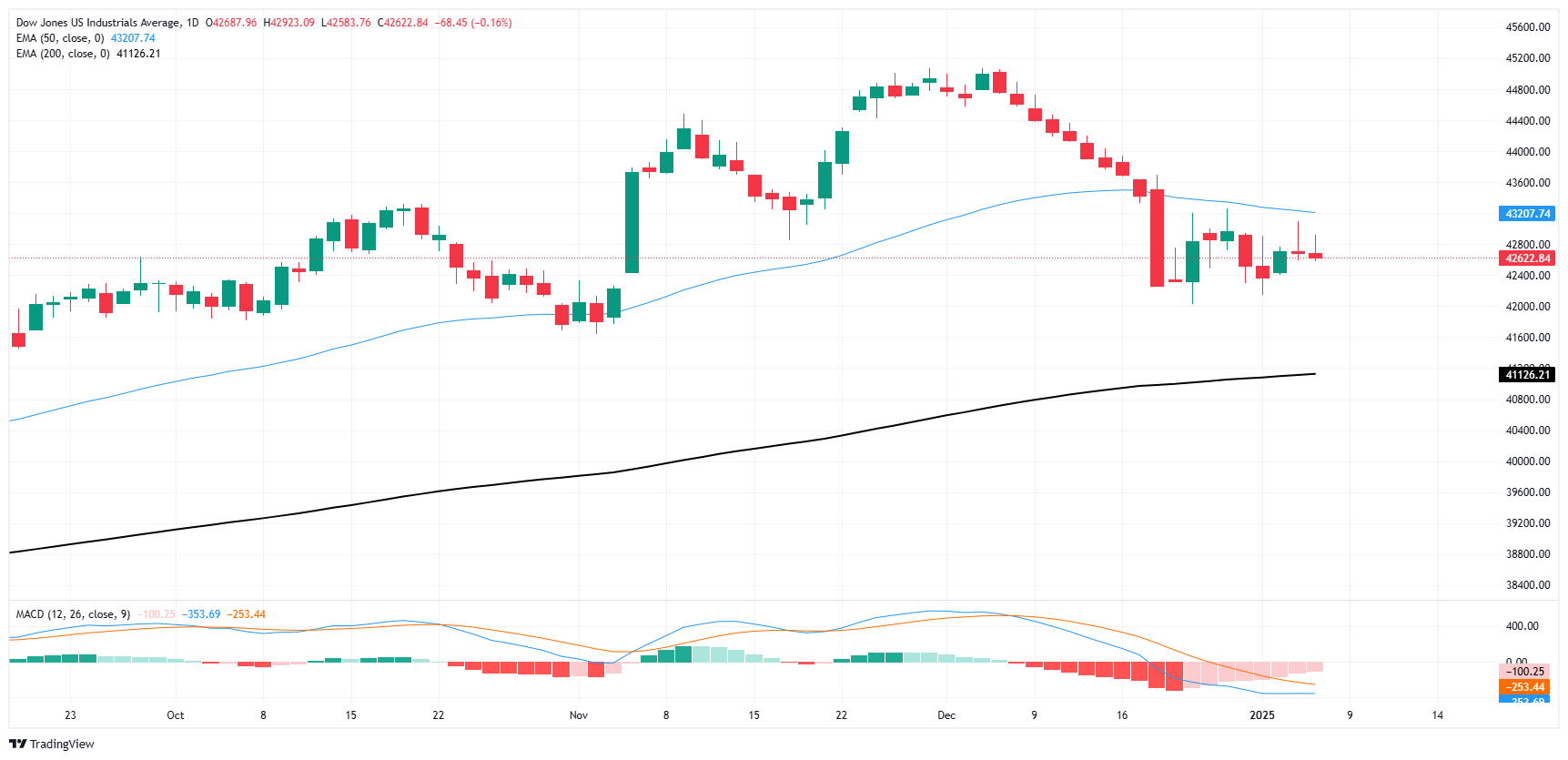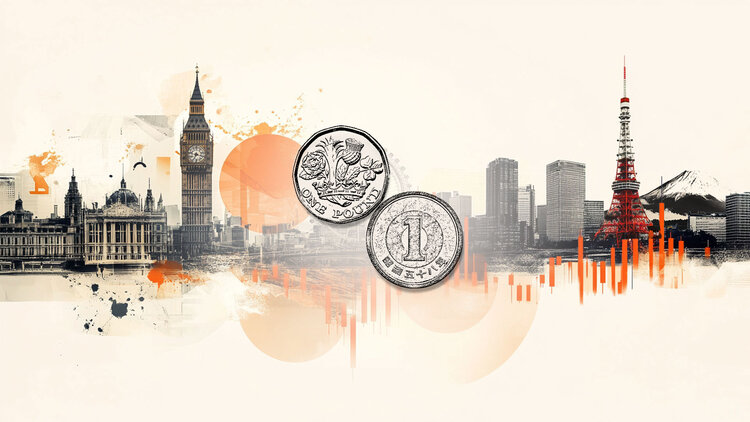- The Dow Jones was stuck in congestion near 43,000 on Tuesday.
- US ISM PMI figures were much higher than expected in December.
- The stronger-than-expected business survey results are reigniting fresh fears of fewer Fed cuts.
The Dow Jones Industrial Average (DJIA) shook on Tuesday as technology stocks pared recent gains, with investors further shifting away from their optimistic stance after a higher-than-expected figure in the Purchasing Managers’ Index (PMI). ) of the December ISM will reduce hopes for rate cuts by 2025.
Equity markets hoping to extend last year’s AI-driven tech bull run into the new year hit a tough wall on Tuesday, with the tech space’s top favorites giving back recent gains. Profit-focused shareholders want their favorite silicon wafer manufacturing companies to lean further into demand in the AI technology space, even as the segment of that sector that deals with selling AI solutions to consumers and businesses struggles. for developing stable profit generation methods.
The ISM Services PMI figure for December was well above median market forecasts, recording 54.1 versus the expected 53.3 and recovering firmly from the previous month’s 52.1. ISM Prices Paid for Services survey results also accelerated to a 22-month high of 64.4 in December compared to 58.2 in November.
With the outlook for business activity generally rising faster than expected, as well as the prices paid by those companies appearing to rise again, investors are pulling back from the prospect of inflation remaining more persistent than previously expected. Steady growth in business activity plus rising producer prices will make it difficult for the Federal Reserve (Fed) to deliver as many rate cuts as traders expected.
According to the CME’s FedWatch tool, rate traders now expect the Fed to hold off on further rate cuts until June. The Fed is expected to keep rates unchanged for most of the first half of 2025.
Dow Jones News
Just over half of the companies listed on the Dow Jones are testing in the green on Tuesday, keeping the main index balanced despite the biggest drop in key technology stocks. Nvidia (NVDA) fell more than 5%, retreating below $142 per share as investor expectations for the chipmaker cool. The company recently unveiled a new range of chipsets based on its now-familiar Blackwell architecture, but its decision to focus the latest launch on a return to its roots in providing hardware for gaming rigs received a lukewarm and delayed response from gaming technology investors. AI that the company initially pushed earlier in the week.
Dow Jones Price Forecast
A rough consolidation pattern is brewing on the Dow Jones chart, keeping the main stock index limping in a choppy range between 43,000 and 42,000. Selling pressure remains unable to push price action firmly on a downward trajectory, and bids remain reinforced on a technical top from the 50-day EMA descending through 43,200.
Bulls tired of hitting the buy button could run out of gas after keeping the Dow Jones pushed into a one-sided uptrend. The DJIA has surpassed its own 200-day EMA for 14 consecutive months, and buyers could be tired of winning, which could cause the index to trim more gains and fall back to softer chart regions.
Dow Jones Daily Chart
Dow Jones FAQs
The Dow Jones Industrial Average, one of the world’s oldest stock indices, is made up of the 30 most traded securities in the United States. The index is weighted by price rather than capitalization. It is calculated by adding the prices of the securities that comprise it and dividing them by a factor, currently 0.152. The index was founded by Charles Dow, also founder of the Wall Street Journal. In recent years it has been criticized for not being sufficiently representative, since it only follows 30 companies, unlike broader indices such as the S& P 500.
There are many factors that drive the Dow Jones Industrial Average (DJIA). The main one is the aggregate performance of its component companies, revealed in quarterly corporate earnings reports. US and global macroeconomic data also contribute, influencing investor sentiment. The level of interest rates, set by the Federal Reserve (Fed), also influences the DJIA, as it affects the cost of credit, on which many companies largely depend. Therefore, inflation can be a determining factor, as well as other parameters that influence the decisions of the Federal Reserve.
The Dow Theory is a method for identifying the main trend of the stock market developed by Charles Dow. A key step is to compare the direction of the Dow Jones Industrial Average (DJIA) and the Dow Jones Transportation Average (DJTA) and only follow trends where they are both moving in the same direction. Volume is a confirmation criterion. The theory uses elements of maximum and minimum analysis. The Dow theory proposes three phases of the trend: accumulation, when the smart money begins to buy or sell; public participation, when the general public joins the trend; and distribution, when the smart money abandons the trend.
There are several ways to trade the DJIA. One of them is to use ETFs that allow investors to trade the DJIA as a single security, instead of having to buy shares of the 30 companies that comprise it. A prominent example is the SPDR Dow Jones Industrial Average ETF (DIA). Futures contracts on the DJIA allow traders to speculate on the future value of the index, and options provide the right, but not the obligation, to buy or sell the index at a predetermined price in the future. Mutual funds allow investors to purchase a portion of a diversified portfolio of DJIA securities, providing exposure to the global index.
Source: Fx Street
I am Joshua Winder, a senior-level journalist and editor at World Stock Market. I specialize in covering news related to the stock market and economic trends. With more than 8 years of experience in this field, I have become an expert in financial reporting.






